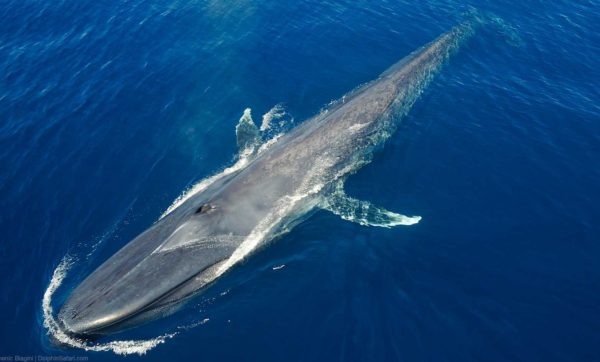Majestic whales have been haunting scientists ever since they were first discovered. Unfortunately, their exclusivity did not help them escape the barbaric extermination, and the number of these marine mammals declined menacingly during the heyday of whaling. Fortunately, now hunting for them is prohibited, and it is hoped that their population will recover over time.
Interesting facts about whales
- It is blue whales that are the largest living creatures on Earth.
- The desire to see the migration of whales with your own eyes is the main reason why tourists from all over the world arrive every year in the remote Kingdom of Tonga. It is past the islands of the Tongan archipelago that the migration routes of these amazing animals lie.
- Contrary to popular belief, whales are not a species related to dolphins. But predatory killer whales are really considered their relatives (interesting facts about killer whales).
- The mass of an adult blue whale can reach 120-150 tons, and the body length is 30-33 meters. For comparison, an 8-story residential building usually does not exceed 27-28 meters in height.
- The ancestors of modern whales plowed the waters of the oceans 55 million years ago.
- Over the past few centuries, whales somewhat crushed, since the largest individuals more often than others became victims of whalers, and size is an inherited trait.
- Whales never sleep completely, as they need to periodically rise to the surface for fresh air. Their sleep is more like a half-dream. And they do not seem to need it too much, because they can not sleep for 3 months. If needed, of course.
- A thick layer of blubber protects whales from the cold, so they are able to swim even in the coldest seas (interesting facts about seas).
- In the language of an adult blue whale, weight which can reach 3.5-4 tons, can accommodate up to 50 adults.
- Whales are also not afraid of starvation. They are able to go without food for 8-10 months.
- A newborn blue whale cub weighs about two tons.
- According to genetic studies, whales descend from terrestrial artiodactyls. Yes, evolutionary processes are sometimes amazing, this is a fact.
- During inspiration, the whale draws in about 2 thousand liters of air per second.
- The blood of these mammals is more oxygenated than any other living beings.
- A baby whale drinks 300-350 liters of mother’s milk daily.
- The skin of blue whales lends itself to sunburn. This helps them minimize the effects of harmful ultraviolet radiation.
- People have actively hunted these animals for almost a thousand years.
- By exhaling carbon dioxide, bowhead whales create a fountain 5-6 meters high.
- These creatures inhale the air with the help of a special organ located in the back of the head.
- The diameter of the blood vessels of whales reaches several tens of centimeters.
- The body of an adult blue whale contains about 8,000 liters of blood.
- The size of a whale’s heart is comparable to the size of a car.
- The life span of these creatures can exceed 100 years.
- Female blue whales give birth to one calf about once every two years, and their pregnancy lasts about 11-12 months. No one knows for sure yet.
- A whale consumes about 8 million calories of food every day.
- These animals do not have ears, but special organs located on the lower jaw help them hear sounds.
- They have no senses such as taste and smell at all. And they see very poorly (interesting facts about vision).
- Adult blue whales are not afraid of any other animals, but their cubs sometimes become victims of killer whales.
- In all the museums of the world, only about 10 skeletons of blue whales.
- Sperm whales, the largest predators on Earth, also belong to whales. In length, they reach 20 meters, and their body weight reaches 50 tons.
